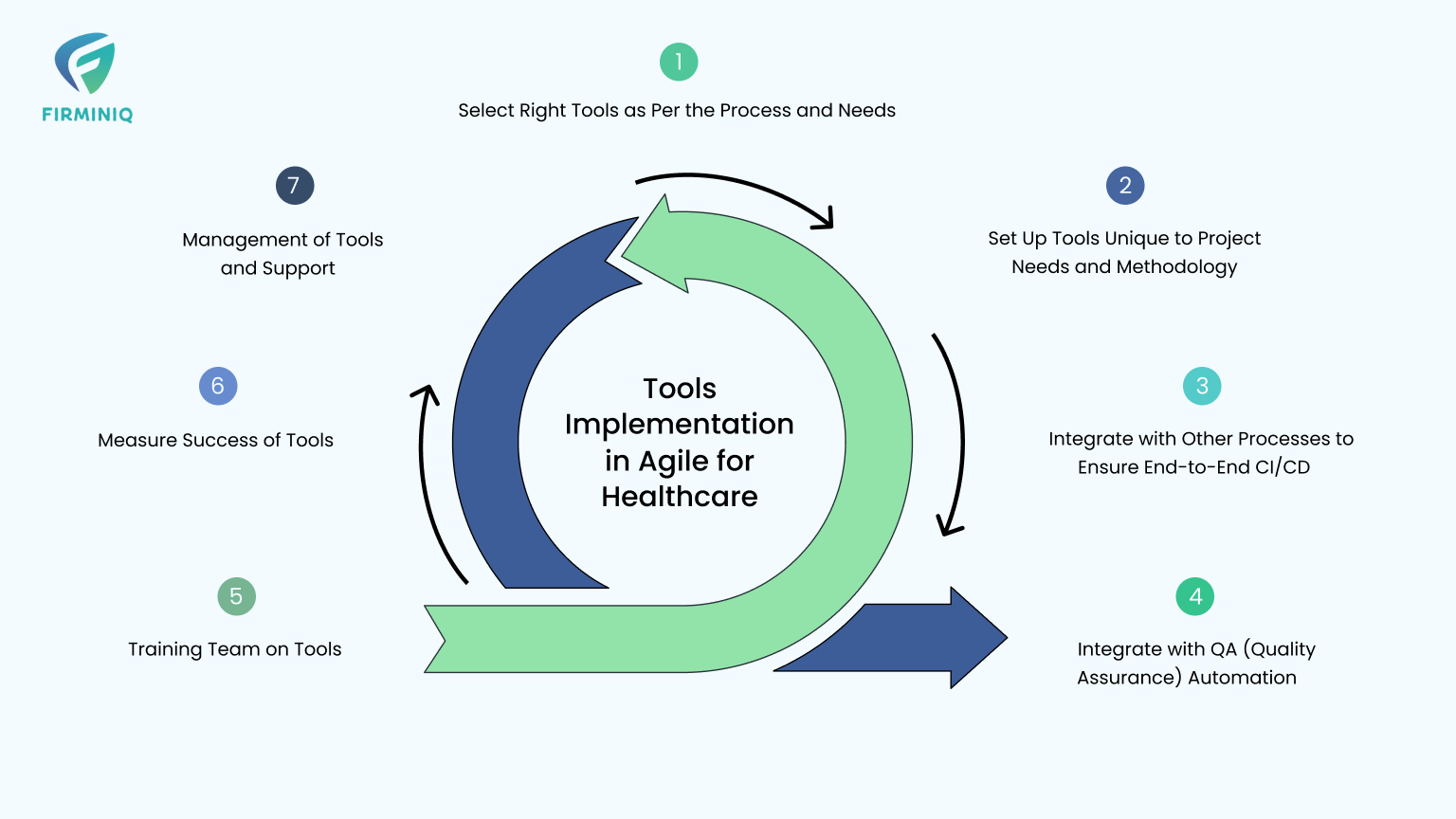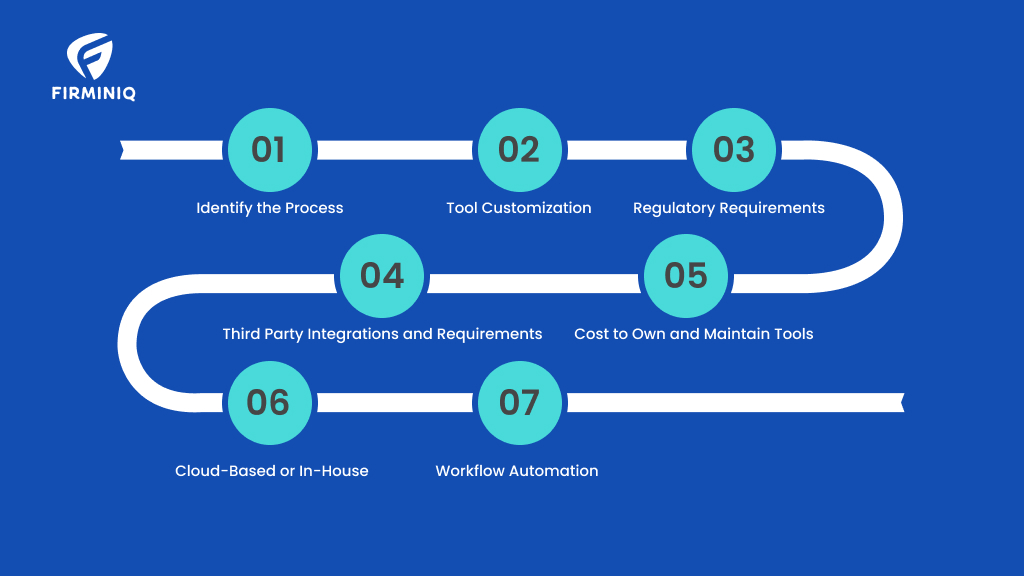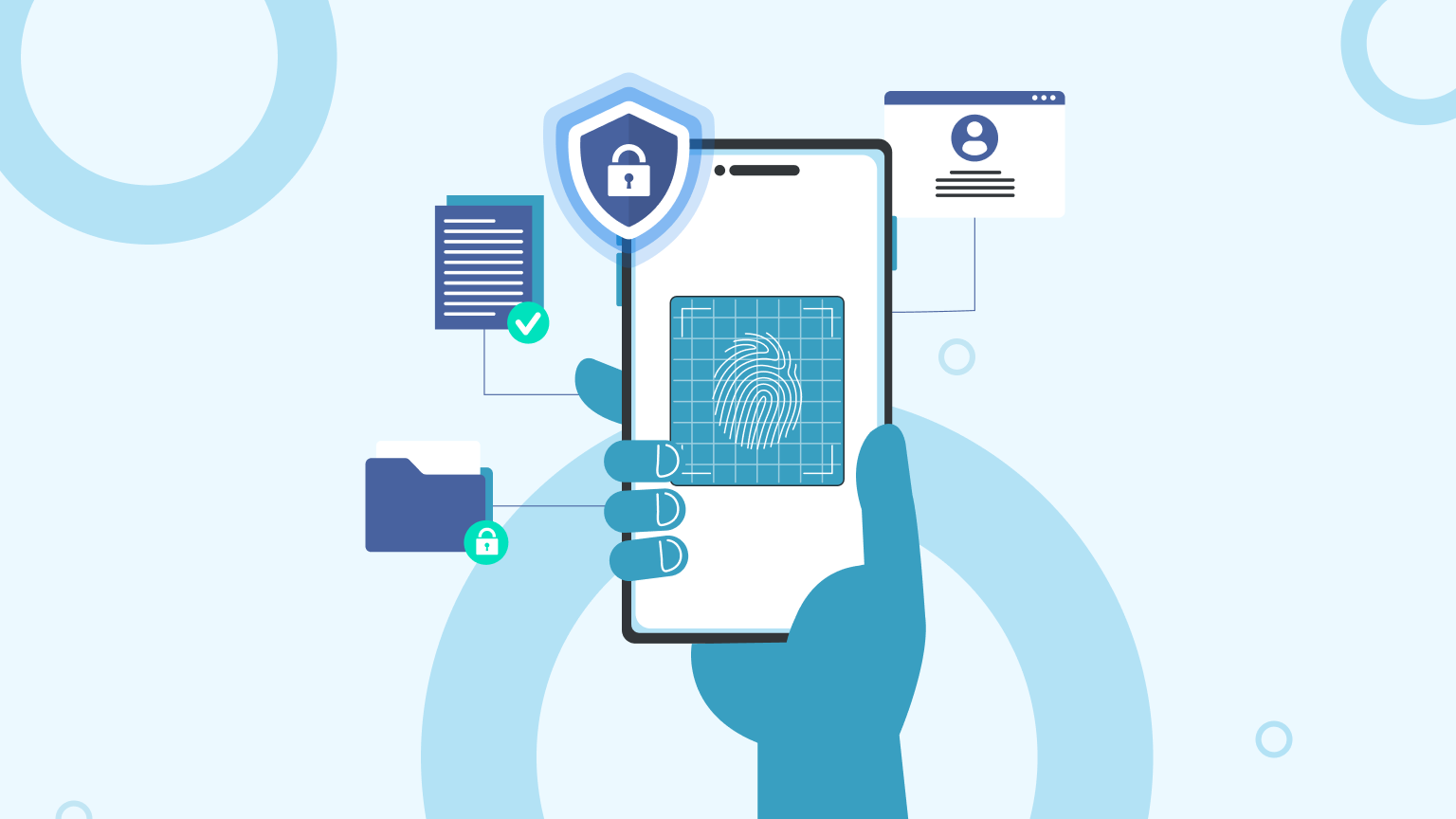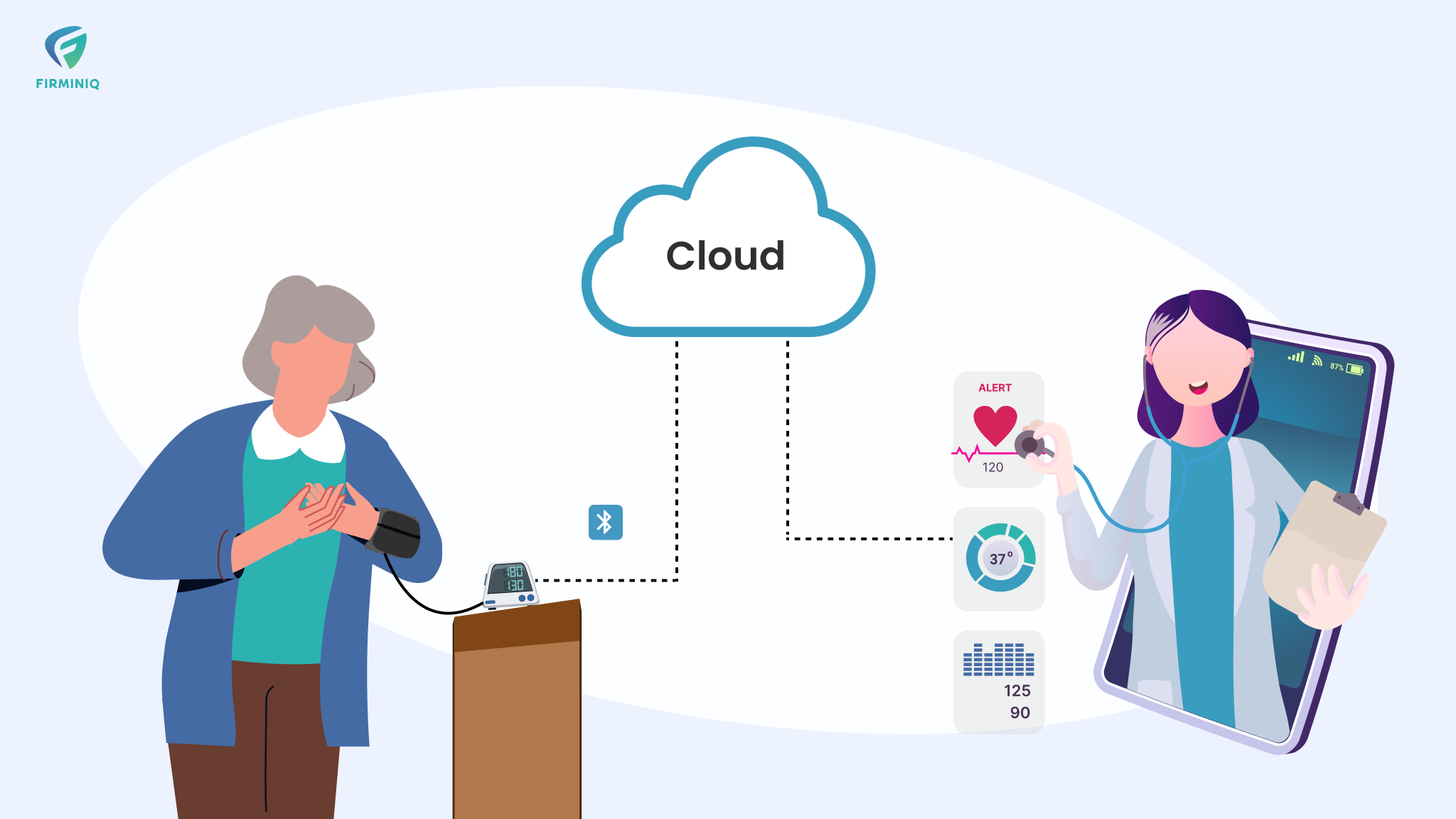Agile development has transformed the way teams approach software development, emphasizing more flexibility and iterative progress. However, to be successful in Agile software development, using the right tools and their successful implementation is important. It ensures they can minimize manual tasks, secure higher productivity, and facilitate a smooth workflow.
When implementing tools in Agile for healthcare software development, tools must be selected based on the specific and regulatory needs of the regulations (healthcare, financial or other industry). Assessing the effectiveness of tools and adopting them as per the need contributes towards a successful Agile implementation in healthcare. Have a read further and know the steps to achieve optimal implementation of Agile tools.
Steps for Successful Tools Implementation in Agile for Healthcare
Tool implementation in Agile is an ongoing process, therefore regularly evaluating it helps ensure it continues to support Agile methodologies. Leveraging appropriate tools, Agile teams can define their processes, automate routine tasks, enhance communication, help to keep project discipline, and refine practices. Know the step-by-step guide for a successful tool’s implementation in healthcare:
1. Select Right Tools as Per the Process and Needs
Selecting the right tools as per the process plays a significant role in impacting the team’s success and productivity. Let us delve into the considerations for the same:
a. Identify the Process
Determine whether your process follows the Agile methodology or if it’s a custom process tailored to your organization’s unique requirements.
b. Tool Customization
When your process requires customization, it’s crucial to ensure that the tools you plan to use allow for such customization.
Suppose a healthcare organization is adopting Agile methodologies to manage their projects, including software development and process improvement initiatives. They need a task management tool that can be customized to align with their specific workflow.
Say for example, by customizing Trello to fit their Agile healthcare processes, the organization enhances collaboration, streamlines project management, and ensures compliance with healthcare data security regulations.
c. Regulatory Requirements
Choose tools that have features for creating, managing, and tracking validation documentation. These tools should make it easy to generate compliance-related documents, perform validation tests, and more.
d. Third Party Integrations and Requirements
Research and determine which of your existing tools need to be integrated with the Agile toolset. Prioritize tools that offer APIs or have integration capability with existing systems.
Integrating third-party tools as per the requirement in the healthcare Agile development process can enhance efficiency, collaboration, and compliance. For example, linking call center tickets to internal work tickets can boost communication and resolve issues.
e. Cost to Own and Maintain Tools
Analyze the initial costs and long-term expenses associated with the tool. Savings can be calculated based on manual time saved, efficiency and error reduction.
f. Cloud-Based or In-House
Decide whether the tool should be cloud-based or hosted in-house. Compare the benefits of cloud-based tools like scalability, accessibility, and automatic updates, against security and control advantages of in-house hosting and then decide.
g. Workflow Automation
Check if the tool offers workflow automation features like notifications, and approvals. It helps streamline processes and reduce manual effort.
2. Set Up Tools Unique to Project Needs and Methodology
To set up the tools, it is recommended to define clear workflows for both internal and external clients, outlining how tasks progress and specifying parameters to capture in each story, task, or plan. Additionally, establish robust security measures to protect sensitive project and client data, ensuring compliance with project-specific security requirements.
3. Integrate with Other Processes to Ensure End-to-End CI/CD
To ensure end-to-end CI/CD, integrate your chosen tools with other processes within your healthcare organization. This seamless integration is key to delivering software efficiently and reliably. It helps to establish a seamless workflow that spans from requirements gathering to deployment and monitoring. Furthermore, it fosters consistency, reduces manual intervention, boosts speed, and improves the overall quality of software development.
For example, Agile tool JIRA that can be integrated with other processes and tools like GIT for version control (ensures the code changes are tracked, versioned and integrated seamlessly), Slack for real-time communication, test automation tools for the automatic creation of test execution and results reports, deployment, and monitoring tools to trigger deployments and monitor system health.
4. Integrate with QA (Quality Assurance) Automation
Integrating Agile tools with QA automation processes ensures efficient testing and validation of healthcare software. Using Agile tools, test cases and the expected outcome can be managed. Issues can be identified during testing to corresponding tasks or user stories within the Agile toolset.
For example, by integrating Agile tools like JIRA with QA automation processes, you create a cohesive ecosystem for healthcare software development and validation. The approach boosts collaboration, automation, validation, and traceability improving the efficiency and quality of software testing and validation in healthcare.
5. Training Team on Tools
Providing training to the project team members on how to effectively use the selected tools is another vital step. It helps ensure effective adoption and the utilization of tools. The organizations must identify the roles of the team members within and determine their familiarity with the tools.
A comprehensive training program that allows team members to interact directly with the tools fosters a collaborative learning environment.
6. Measure Success of Tools
Now after implementing the tools effectively, measuring its success is important to ensure if they are offering the intended benefits and aligns with the healthcare processes. Some of the key considerations it must offer includes:
a. Reduce Manual Work
Measure the reduction in manual process or the repetitive tasks these tools offer. Compare the previous time and effort and after the implementation and check the improvements.
b. Check if it Align with your Processes
Evaluate if the tools implemented fit and align with the existing healthcare processes. If the tools can streamline the workflow, reduce time, and enhance collaboration, overall efficiency, you can consider it long-term.
c. Expansion to other Team Members
Check and track adoption rate of tools by other team members. Follow to what extent the team members and departments can seamlessly embrace the tools and monitor its scalability accordingly.
d. Easy to Understand
Take valuable feedback from different team members. Organizations can also conduct surveys and ask about the user-friendliness of the tools if they are intuitive and easy to operate. Additional training can be provided based on the feedback received.
e. Organizational Impact
Check what impact the organization has after the tool’s implementation. Evaluate if the tools have contributed to enhanced patient care, reduced errors and better decision making.
7. Management of Tools and Support
Effective management of tools in Agile involves responsibility for the implementation if it aligns with the organizational goals and more. Ensure that management actively supports Agile practices and provides necessary resources.
Successful Implementation of Tools in Agile with FIRMINIQ
Agile is one of the most popular methodologies used by development teams to work efficiently. Agile implementation in healthcare, with the right tool selection and strategies boosts the development process and brings productivity.
With the Agile project management approach, FIRMINIQ helped transform the challenges of global medical device development into opportunities for innovation and excellence.
Success in healthcare Agile tool implementation involves achieving specific outcomes and improvements. The success achieved at FIRMINIQ in healthcare Agile tool implementation is centered around outcomes:
1. Offer End-to-End Integration Reducing Manual Work
We offer end-to-end integration across the software development lifecycle, coupled with automation, that result in a significant reduction in manual tasks and interventions. Automation streamlines processes, minimizes errors, and accelerates delivery.
2. Rich Tool Stack Experience
When the development team finds the tool stack intuitive, user-friendly, and aligned with their needs it leads to a positive experience. FIRMINIQ’s success is also attributed to providing a rich tool stack experience that aligns with the needs of the development team.
3. Automation of Processes
Our chosen tools at FIRMINIQ help automate processes, such as tracking user stories, managing tasks, updating status, and generating reports. Automation improves efficiency and consistency. It furthers helps with:
a. Traceability
The tools track the flow of requirements, features, tasks, and changes till implementation. It ensures transparency and aids in regulatory compliance.
b. Workflow Management
Automated workflows ensure that tasks have defined paths, that reduces bottlenecks and ensures consistent processes.
c. Reports and Validation
The tools generate reports, offering insights into the development process and validation activities.
d. Release Tracking
FIRMINIQ’s tools automatically track all software releases from inception to deployment while maintaining a comprehensive record of each release’s details.
The development leaders must provide their teams with the tools and resources they need to succeed. Harnessing the power of tools, healthcare organizations can bring a change in the development environment. If you are looking for healthcare software development with Agile practices and tools, contact FIRMINIQ.
Thanks for reading! Your feedback is vital to us, and we genuinely appreciate your time in sharing your thoughts. Leave us a comment.








